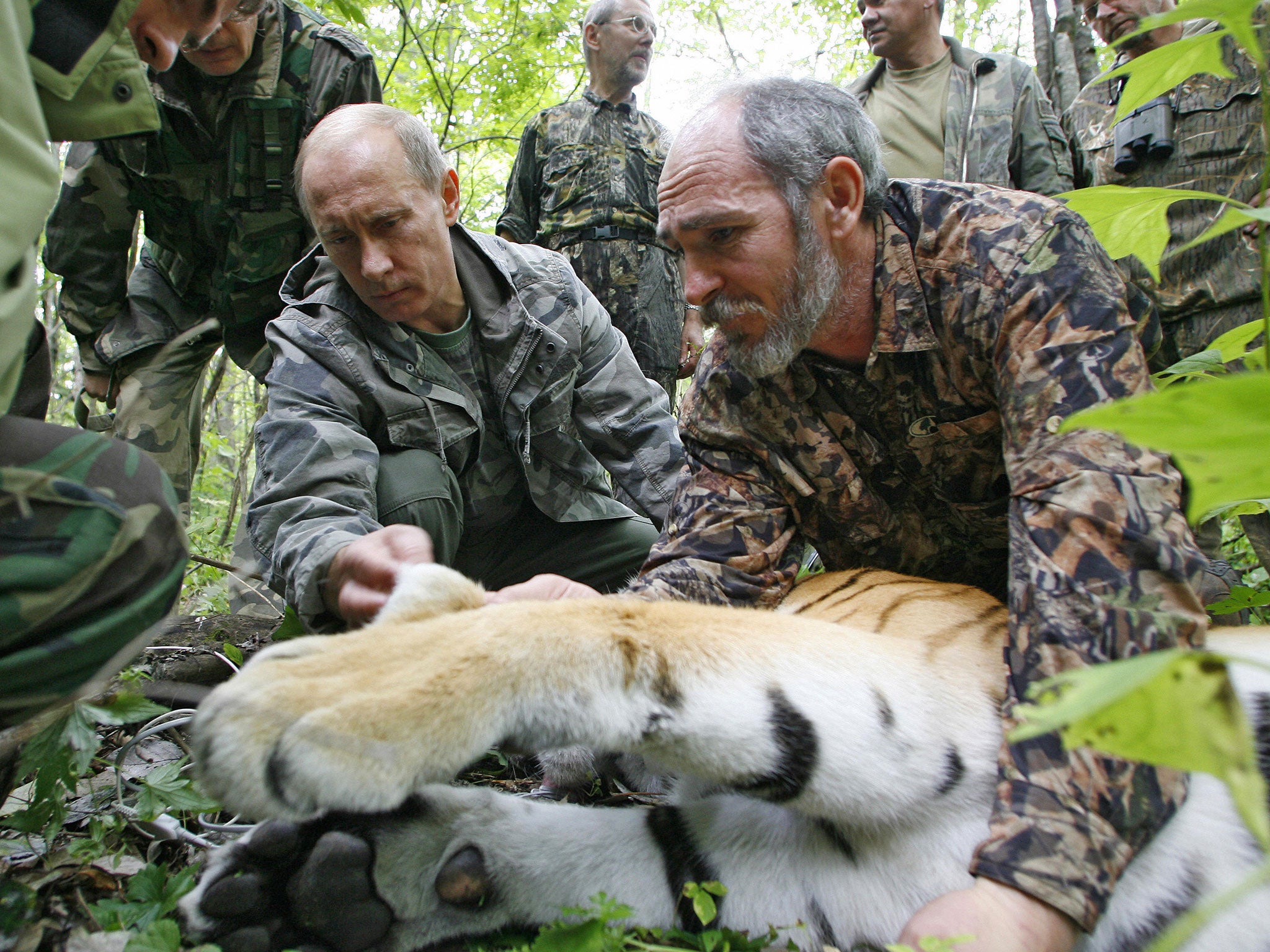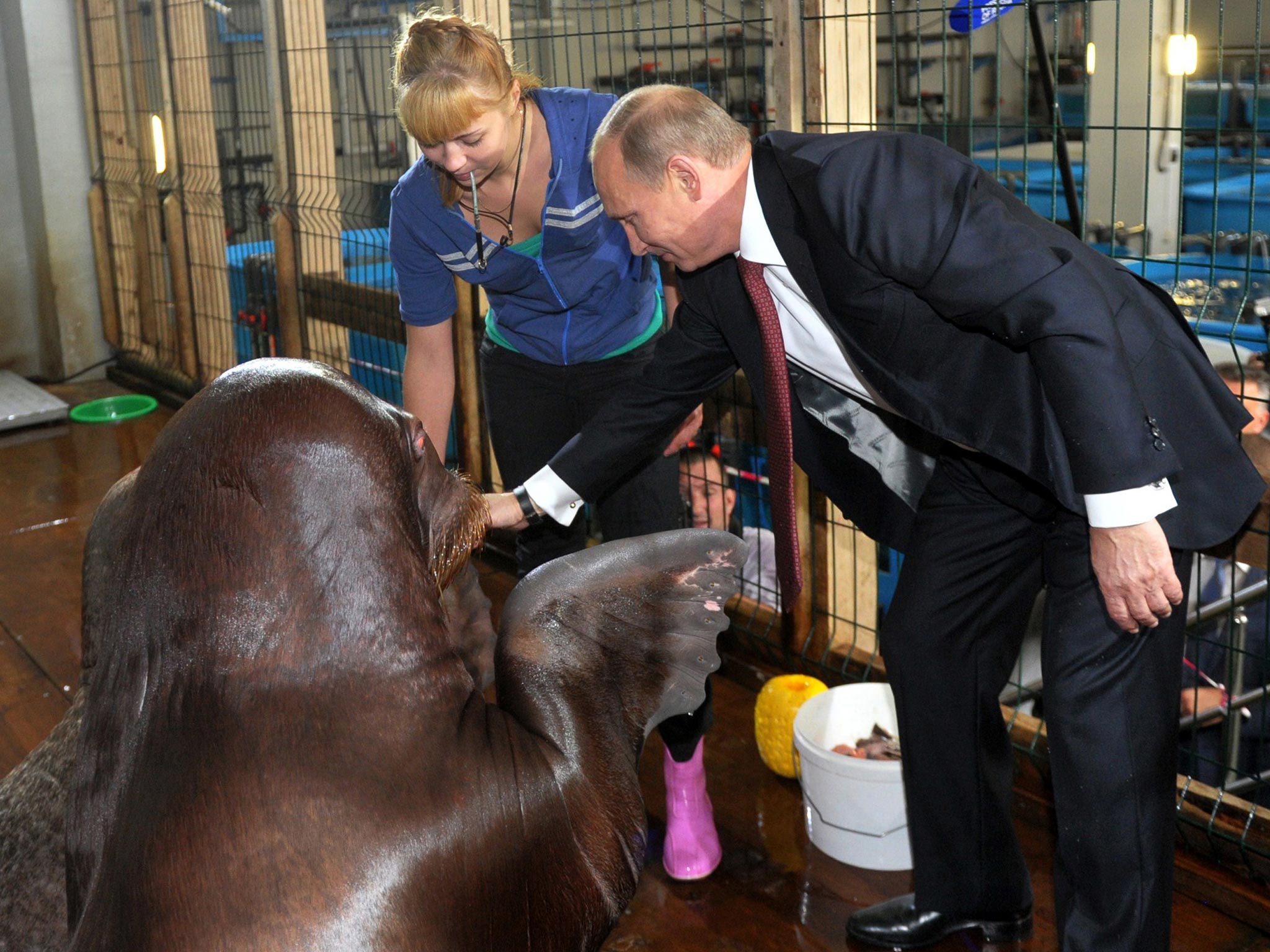Siberian tiger released into wild by Vladimir Putin defects to China
Kuzia the tiger has crossed the border, possibly looking for food

Your support helps us to tell the story
From reproductive rights to climate change to Big Tech, The Independent is on the ground when the story is developing. Whether it's investigating the financials of Elon Musk's pro-Trump PAC or producing our latest documentary, 'The A Word', which shines a light on the American women fighting for reproductive rights, we know how important it is to parse out the facts from the messaging.
At such a critical moment in US history, we need reporters on the ground. Your donation allows us to keep sending journalists to speak to both sides of the story.
The Independent is trusted by Americans across the entire political spectrum. And unlike many other quality news outlets, we choose not to lock Americans out of our reporting and analysis with paywalls. We believe quality journalism should be available to everyone, paid for by those who can afford it.
Your support makes all the difference.A rare Siberian tiger personally released into the wild by Vladimir Putin has reportedly defected to China.
Officials have tracked the animal, named Kuzia, across the border from Russia into Heilonjiang province, where they are trying to capture it.
It was one of three endangered tigers released under the President’s watchful eye in a remote part of Siberia in May.
Chinese state media said Kuzia had swum across the Amur River, most probably in search of food, and was picked up close to China's Taipinggou nature reserve.
“A Russian expert called to tell us the location of the tiger and expressed the hope that we can protect it,” nature reserve director Chen Zhigang told Xinhua news agency.

Chen said forestry officers would set up dozens of cameras to capture images of the tiger and notify local farmers.
The tiger should find plenty of food among the reserve's wildlife, he said, but officials were prepared to “release cattle” into the area to feed it.
Putin was celebrated by Russian media in 2008 for supposedly saving a television crew from being mauled when he shot a Siberian tiger with a tranquilizer gun after it escaped from wildlife specialists at a national park.
The former KGB spy has carefully cultivated a macho image with other wildlife stunts, which he has said are worthwhile because they draw attention to conservation projects.
Siberian tigers, also known as Amur tigers, previously roamed across eastern parts of Russia, north-eastern China and the Korean peninsula, but had almost died out by the 1940s.
There are an estimated 400 to 500 left in the wild as efforts to save them from extinction continue.
“Russia and China have been working on the protection of Siberian tigers for decades. Cooperation has spread among the scientists and even among the leaders of the two countries,” said Jiang Guangshun, deputy head of the Feline Research Centre of the State Forestry Administration.
China's insatiable demand for tiger products, often used in Chinese medicines, has helped drive indigenous subspecies of the animal in the wild to the brink of extinction.
Additional reporting by Reuters
Join our commenting forum
Join thought-provoking conversations, follow other Independent readers and see their replies
Comments